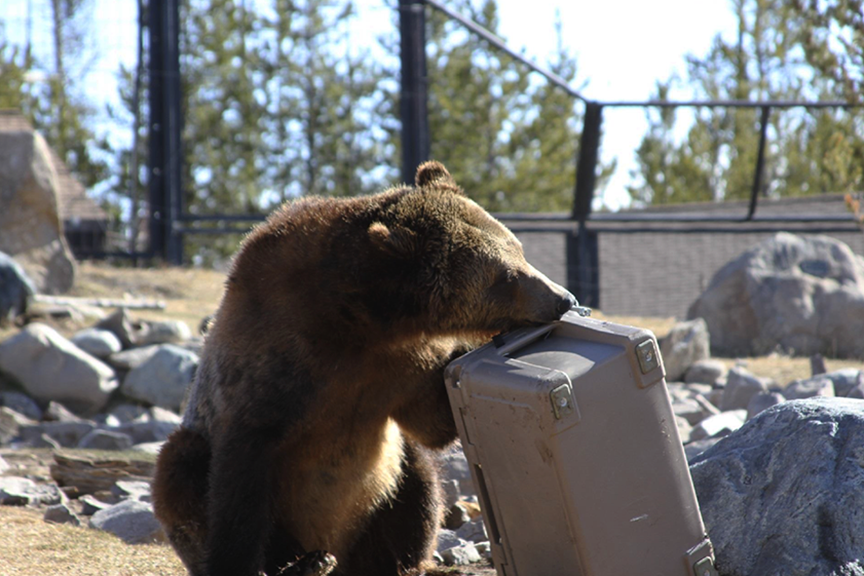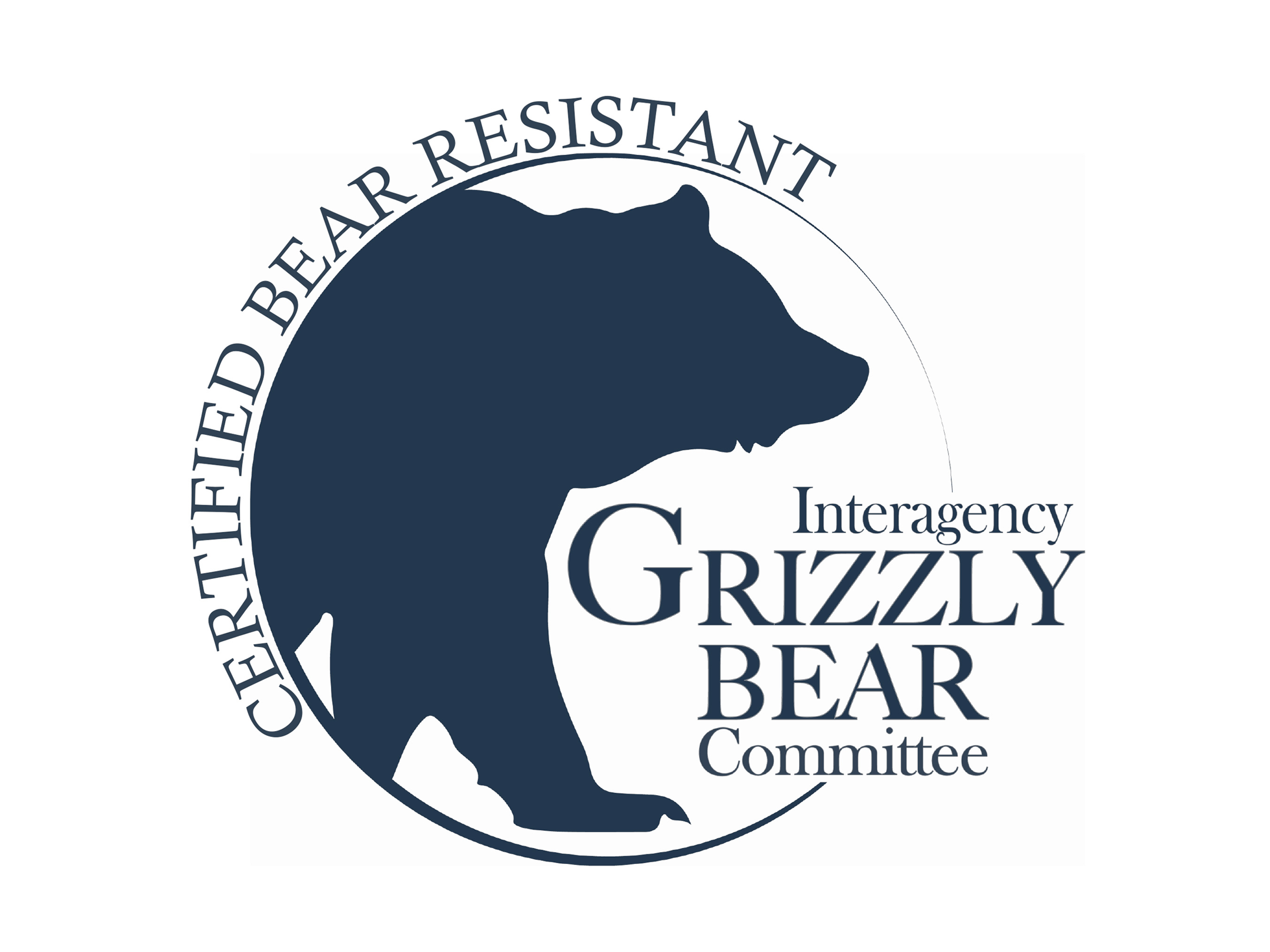You can check to see if a product you are thinking of purchasing or that you already own is one of the nearly 500 products from more than 100 manufacturers that are on the IGBC List of Bear-Resistant Products.
You may notice that the IGBC’s list of certified bear-resistant products has recently changed. Manufacturers of IGBC-certified bear-resistant products are required to verify that their products are still manufactured to their original specifications, and that they are still available to consumers, and to annually pay an administrative fee. This process helps ensure that the information IGBC is providing to the public about these products is accurate and current. Products from manufacturers that have completed this verification process appear on this list of IGBC-certified bear-resistant products. If a manufacturer has not completed the annual verification process (including payment of their administrative fees), then their products do not appear on the IGBC’s list of certified products, but may be on this unconfirmed products list. Manufacturers can contact the testing program, confirm the status of their IGBC-certified products, pay the required administrative fee, and have their products added back to the official IGBC list of certified bear-resistant products at testing@igbconline.org.
Manufacturers are asked to place the IGBC Certified Bear-Resistant logo and their certification number in a prominent location on their products. The best way to verify that a product is IGBC-certified is to match the number on the product to the list linked above.
Products must meet specific criteria, and either “pass” a live bear test using captive grizzly bears or a technical evaluation in order to appear on the list. It is important to note that IGBC certification does NOT guarantee that a product is BEAR-PROOF; nor does certification by the IGBC guarantee that a product will never be breached by bears or that small amounts of the contents of the containers won’t be able to leak or spill out. Certified products must still be properly utilized – for example, an unlocked cooler is not bear-resistant. The IGBC also encourages people living, working, or recreating in grizzly bear habitat to be diligent in their sanitation and attractant storage to minimize the chance of a human-bear conflict.
While many public land managers use the IGBC list as a means for approving products for use on the lands within their jurisdiction, IGBC certification does not imply that products have automatically been approved for use on all public lands. Manufacturers and consumers should consult with specific land management agencies to confirm whether or not a product complies with local food storage requirements.
Feedback from the public about how well products are performing can help manufacturers identify and correct design issues. If you observe a bear-resistant product failure, please submit a Field Failure Reporting Form.

About the IGBC Bear-Resistant Products Testing Program
IGBC began providing guidance and direction relative to bear-resistant containers in the 1980s with a goal of ensuring effective storage of attractants and minimizing human/grizzly bear conflicts. The testing program is a partnership with the Grizzly & Wolf Discovery Center and the Washington State University Bear Center, which conduct the live testing with grizzly bears in West Yellowstone, Montana, and Pullman, Washington, respectively. and the Wildlife Management Institute, which provides financial and administrative support. Products must meet specific criteria in order to be certified as bear-resistant by the IGBC. The protocol for testing was developed through a cooperative effort among IGBC, Montana Fish, Wildlife and Parks, the US Forest Service, the Living with Wildlife Foundation, and the Grizzly & Wolf Discovery Center.
If a product appears on the list of IGBC-approved bear-resistant products, it means that the commercially-available product has met minimum standards related to the effort that must be expended by grizzly bears to access the container’s contents. These standards were established through consultation with North American human-bear conflict experts and bear biologists. Please note that IGBC approval does NOT guarantee that the product is BEAR-PROOF and does not guarantee that the container will never be breached by bears. The intent of this bear-resistant products testing program is to approve products that minimize easy and direct access to attractants by grizzly bears. IGBC approval also does not guarantee that small amounts of the contents of the containers won’t be able to leak or spill out. In conjunction with properly utilizing certified bear-resistant products, the IGBC strongly encourages people living or recreating in grizzly bear habitat to take personal responsibility for maintaining a high level of diligence in their sanitation and attractant storage to further minimize the chance of a human/bear conflict.
No, not all manufacturers choose to include the IGBC logo on their products. The only way to verify a product is IGBC certified is to match the product number to the IGBC’s certified products list.
No. While many public land managers use the list of IGBC-approved products as a means for approving products for use on the lands within their jurisdiction, IGBC approval does not imply that products have automatically been approved for use on all public lands. Manufacturers and consumers should consult with specific land management agencies to confirm whether or not a product complies with local requirements.
Some manufactures choose not to pay to have their products certified. While others may have had them tested and they did not pass, and the manufacturer opted not to continue with the certification process. Please contact the manufacturer directly with questions about their individual products and their certification status.
All certified coolers have the ability to be locked with a padlock, carabiner or nuts & bolts. An unlocked cooler is not considered bear resistant.
A non-certified food storage container must be stored in an approved manner. On most public lands this means stored in a locked, hard-sided vehicle, camper, or trailer, hung 10 feet from the ground and 4 feet away from anything climbable, or put inside an approved and working electric fence system. Please check with your local public land agency for specific regulations.





